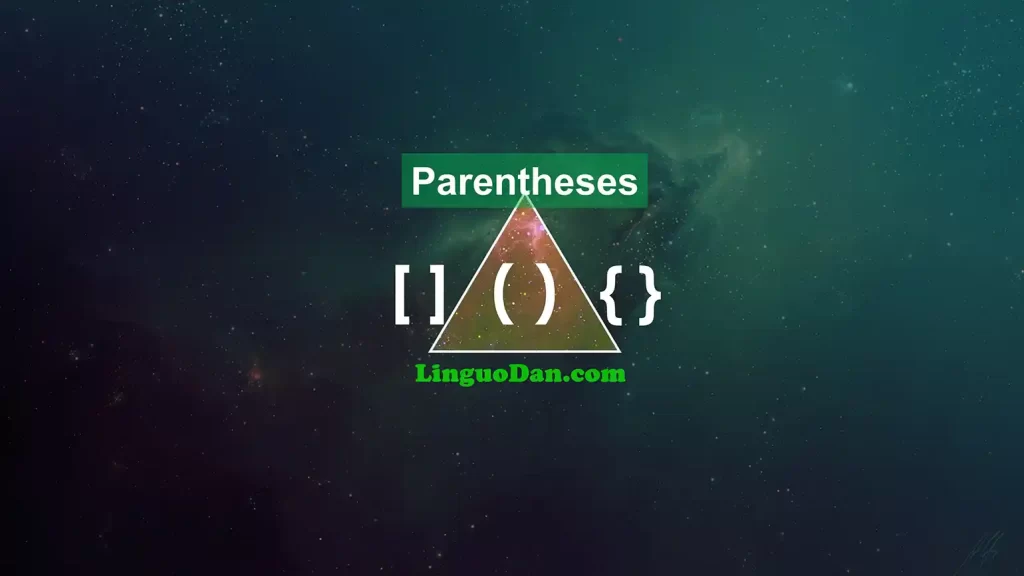Parentheses in English: Definition, rules, and examples

The complete guide to using parentheses in English
Parentheses in English are used to introduce additional information or explanations for a particular part of a sentence. Such information can also be set off by commas or colons instead of parentheses, but parentheses indicate that this information is unimportant or optional. The information in parentheses allows the sentence to be expanded by providing additional details, explanations, examples, or references, while keeping the main idea unchanged.
What are parentheses?
Parentheses are a pair of punctuation marks () used to enclose information that is not essential to the main content of the sentence but may be useful or interesting to the reader. This information can be additional details, clarifications, examples, or references.
Types of parentheses
In English, several types of parentheses are used:
- Round Parentheses or Round Brackets () – most commonly used to add additional information that is not essential to the sentence.
- Square Brackets [] – mostly used to enclose author’s explanations (comments) or corrections in text, quotations, or direct speech.
- Curly Braces {} – used less frequently, primarily in technical texts, programming, and mathematical expressions to group multiple elements together.
Round Parentheses or Round Brackets ()
Example:
- The book (which was published in 1995) became a bestseller.
Square Brackets []
Example:
- The original text was modified [by the editor] for clarity.
Curly Braces {}
Example:
- The set of even numbers is {2, 4, 6, 8, …}.
Parentheses with other punctuation marks, rules, and examples
Periods and Commas
Periods and commas always go after the parentheses if the information in parentheses is part of the sentence.
Example:
- She bought a new dress (which was on sale), and wore it to the party.
Parentheses with Periods
If the parentheses enclose a complete separate sentence, then a period can be used inside the parentheses.
Example:
- He couldn’t attend the meeting. (He was out of town.)
Question marks and exclamation points
Question marks and exclamation points can be placed inside parentheses if they refer to the phrase enclosed in parentheses.
Example:
- She finally agreed to the terms (Can you believe it?)
Basic rules of using parentheses
Additional Information
Parentheses are used to include additional information that is not critically important for understanding the main content of the sentence.
Example:
- The book (which was published in 1995) became a bestseller.
Clarification or explanation
Parentheses can be used to provide clarifications or explanations for the main text.
Example:
- He finally answered (after taking five minutes to think) that he didn’t know the answer.
References to sources or additional information
Parentheses are used to reference sources or additional information.
Example:
- The study shows a significant increase in population (Smith, 2020).
Usage in mathematical and scientific texts
In scientific and mathematical texts, parentheses are used to group numbers or variables.
Example:
- 2(3 + 4) = 14
Abbreviations and acronyms
Parentheses can be used to introduce the full spelling of an abbreviation or acronym.
Example:
- The organization is known as NASA (National Aeronautics and Space Administration).
Area codes
In phone numbers, parentheses are used to separate the area code.
Example:
- You can reach us at (123) 456-7890.
Year periods
Parentheses can be used to indicate periods or durations of years.
Example:
- He lived in Paris (2005-2010) before moving to London.
During numbering
Parentheses are used to mark ordinal numbers or items in lists.
Example:
- The tasks are as follows: 1) Write the report, 2) Review the data, and 3) Submit the findings.
Examples of using parentheses
Example 1:
- I finally bought a new phone (after months of saving).
Example 2:
- He loves ice cream (especially chocolate flavor).
Example 3:
- The results were surprising (see Table 3 for details).
Example 4:
- She moved to New York (her dream city) last year.
Parentheses are a useful tool for including additional information, clarifications, or explanations in text. Proper use of parentheses helps make the text more understandable and structured. Follow the provided rules and examples to improve your English writing skills.